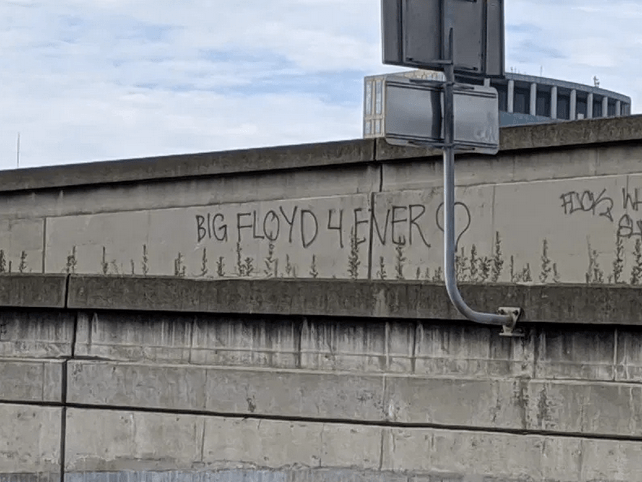On May 1, 2007, I was working at NPR's affiliate in Los Angeles, helping cover the May Day rallies for immigration reform. My beat was always transportation, so I produced a short piece on the role L.A.'s then-newish subway played in moving protesters round the city. My day was exciting, productive and peaceful.
That evening, after my story aired, I was supposed to meet Patricia Nazario, another reporter from the station.
Our news editor called me to say Patricia was in the emergency room.
I went there directly. As the nurses were treating her, I recorded her account of what happened, while it was still fresh in her memory. She was covering the rally in MacArthur Park, literally above where I had been reporting from the subway, when the police forced the crowd to disperse. Patricia was collecting her gear when a cop poked her in the back with a baton. She identified herself as a reporter (as if her mic flag wasn't enough). The cop then whacked her in the legs, causing her to fall and hit her head.
That cowardly cop had his face covered--all Patricia could see were his blue eyes. None of his colleagues would identify him; he was never punished.
As has been echoed in the protests throughout the country, the cold-blooded murder of George Floyd by a Minneapolis police officer last month was just the latest in a heinous stream of violence perpetrated by cops on people of color. Not all cops are bad, but too many "good" cops have failed to intervene or speak up, indicative of a system that tolerates brutality and racism at its core.
Americans are rightfully fed up.
But the resulting protests have to be the beginning of change--not just a justified expression of outrage.
President Barack Obama put it best in a recent essay, and I think it totally applies in the Bay Area:
The point of protest is to raise public awareness, to put a spotlight on injustice, and to make the powers that be uncomfortable; in fact, throughout American history, it’s often only been in response to protests and civil disobedience that the political system has even paid attention to marginalized communities. But eventually, aspirations have to be translated into specific laws and institutional practices — and in a democracy, that only happens when we elect government officials who are responsive to our demands.
And:
When we think about politics, a lot of us focus only on the presidency and the federal government. And yes, we should be fighting to make sure that we have a president, a Congress, a U.S. Justice Department, and a federal judiciary that actually recognize the ongoing, corrosive role that racism plays in our society and want to do something about it. But the elected officials who matter most in reforming police departments and the criminal justice system work at the state and local levels. [emphasis added]
That sentiment is similar to Killer Mike's powerful statement in Atlanta, in which he implored people to channel their pain and outrage and "strategize, organize and mobilize," also at the local level.
Supporters of safe streets are good at this. The San Francisco Bicycle Coalition, Walk San Francisco, Bike East Bay, and so many other great organizations have demonstrated their abilities, over and over again, to get people out to city meetings, to influence politics, and to fight the good fight.
But if this week's protests illustrate anything, it's that our fight must be about more than ending traffic violence. It's about ending violence for everyone on our streets, whether it comes from the barrel of a gun, a car driven by an inattentive or enraged motorist, or the heel of a policeman's boot.
So those of you who already go to City Hall and make yourself heard, keep doing it (continue doing it online if necessary). Give what you can financially. Help in political campaigns. Run for office yourself. Write op-eds. Keep fighting. And yes, keep protesting.
Resources to take action and support the movement:
Black Lives Matter
Color of Change
NAACP
Showing Up For Racial Justice
Leadership Conference on Civil and Human Rights
***
Note: And so it continues... another colleague from my old radio station, Adolfo Guzman-Lopez, was shot in the neck by a cop:
I just got hit by a rubber bullet near the bottom of my throat. I had just interviewed a man with my phone at 3rd and Pine and a police officer aimed and shot me in the throat, I saw the bullet bounce onto the street @LAist @kpcc OK, that’s one way to stop me, for a while pic.twitter.com/9C2u5KmscG
— Adolfo Guzman-Lopez (@AGuzmanLopez) June 1, 2020






